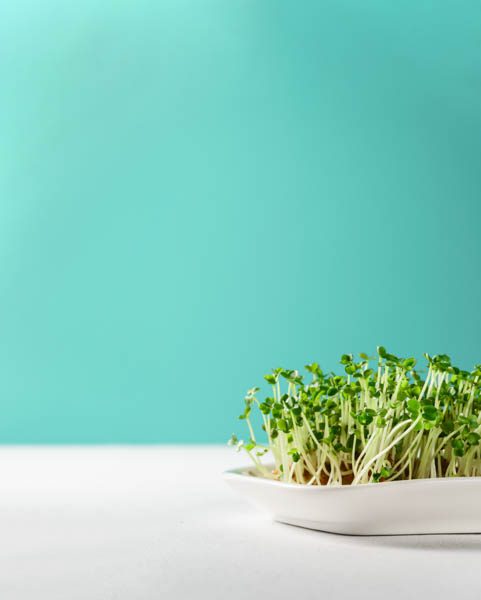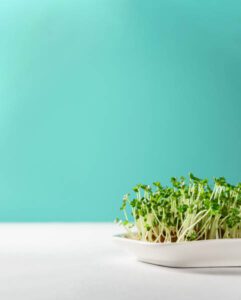
Raising the toddlers of the plant world
Also known as “vegetable confetti”, microgreens are the quickest food crop urban gardeners can grow – often as simply as in a container on your kitchen windowsill.

Not to be confused with sprouts – germinated seeds that are eaten root, seed and shoot – microgreens are the seedlings of leafy herbs and plants that are harvested less than a month after germination.
The stem, seed leaves and first set of true leaves are all edible.
Common microgreen varieties include amaranth, basil, beets, broccoli, cabbage, celery, chard, chervil, coriander, kale, kohlrabi, lettuce, mustard, parsley, peas, radish, rocket, spinach, and sorrel.
Growing microgreens only requires good light – a well-lit kitchen bench, sunny windowsill or balcony – a suitable shallow container, water and a growing medium.
MIGHTY MICROGREENS:
• Microgreens are a nutrient- dense food that contain digestible vitamins, minerals and phytonutrients, and are packed with flavour, colour, texture and living enzymes
• Some studies have shown microgreens contain considerably higher concentrations of vitamins and carotenoids than their mature plant counterparts
• Many varieties will regrow and produce several harvests
HOW TO GROW:
- Line seed tray with moistened paper. Fill tray with moist growing medium, e.g soil or burlap, about 2 to 3cm deep
- Sprinkle seeds over mix, press in lightly
- Water by misting with a spray bottle
- Place on a drainage tray in warm spot
- Water every day as needed, but avoid overwatering!
- Cover seeds with clear lid or plastic bag with holes snipped for airflow to encourage germination
- Harvest after the first two true leaves emerge from the cotyledon by snipping off at soil level



